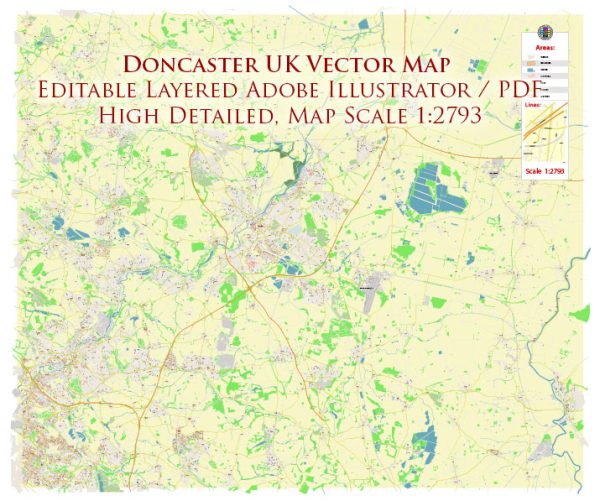Doncaster, located in South Yorkshire, England, has a rich history of urban development that spans centuries. Here’s a brief overview of key periods in Doncaster’s urban development:
- Roman Era (1st Century AD): Doncaster, then known as Danum, was an important Roman settlement. The Romans established a fort at the site, which played a significant role in the region’s transportation and trade networks.
- Medieval Period (10th – 15th Century): Doncaster continued to grow during the medieval period. The town’s market, granted a charter by King Richard I in 1194, became a focal point for economic activity. The town’s strategic location at the crossing of the River Don contributed to its importance.
- 16th – 18th Century: Doncaster expanded further during the Tudor and Stuart periods. The town’s architecture began to reflect the changing times, with the construction of notable buildings such as the Mansion House (1748) and the Church of St. George (1858). The growth of industry, including coal mining and railway development, also played a role in shaping the urban landscape.
- 19th Century: The advent of the railways in the 19th century had a profound impact on Doncaster. The town became a significant railway hub, and the construction of the Doncaster Railway Works in 1853 solidified its reputation as a center for locomotive manufacturing. This industrial development brought economic prosperity and a population boom.
- 20th Century: Doncaster continued to evolve throughout the 20th century. The decline of traditional industries like coal mining had an impact, but the town adapted by diversifying its economy. The post-war period saw urban redevelopment and the construction of new housing estates to accommodate a growing population.
- 21st Century: In recent years, Doncaster has seen efforts to regenerate and modernize the town. Redevelopment projects, improvements in infrastructure, and the revitalization of key areas aim to enhance the town’s appeal and functionality in the contemporary era.
Throughout its history, Doncaster’s urban development has been shaped by its strategic location, economic activities, and societal changes. Today, the town reflects a blend of historical architecture, industrial heritage, and modern amenities.


 Author: Kirill Shrayber, Ph.D.
Author: Kirill Shrayber, Ph.D.